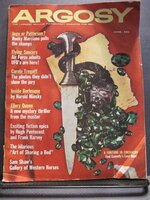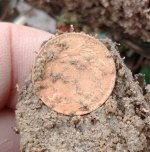Connolly's Lost emerald mines - Brazil
Hi all,
I read a book about 20 years ago or so on various lsot treasures and legends, which talked about Connolly's lost emerald mines in Brazil.
I haven't been able to locate either the book (as i don't recall the title or author) or any other information about this. Story effectively went like this: American explorer goes to Brazil on expedition, gets lost in the jungle after everyone in his expedition dies from disease and other. Ends up living with an Indian tribe for a length of time, as a captive in effect, escapes and finds a mine/area where emeralds are found all over the surrounding area. Finally gets out of the jungle and mounts another expedition some time later to find the emerald mine again and disappears.
Anyone aware of or has more information on this?
Hi all,
I read a book about 20 years ago or so on various lsot treasures and legends, which talked about Connolly's lost emerald mines in Brazil.
I haven't been able to locate either the book (as i don't recall the title or author) or any other information about this. Story effectively went like this: American explorer goes to Brazil on expedition, gets lost in the jungle after everyone in his expedition dies from disease and other. Ends up living with an Indian tribe for a length of time, as a captive in effect, escapes and finds a mine/area where emeralds are found all over the surrounding area. Finally gets out of the jungle and mounts another expedition some time later to find the emerald mine again and disappears.
Anyone aware of or has more information on this?



 hint hint, anyone?
hint hint, anyone?




